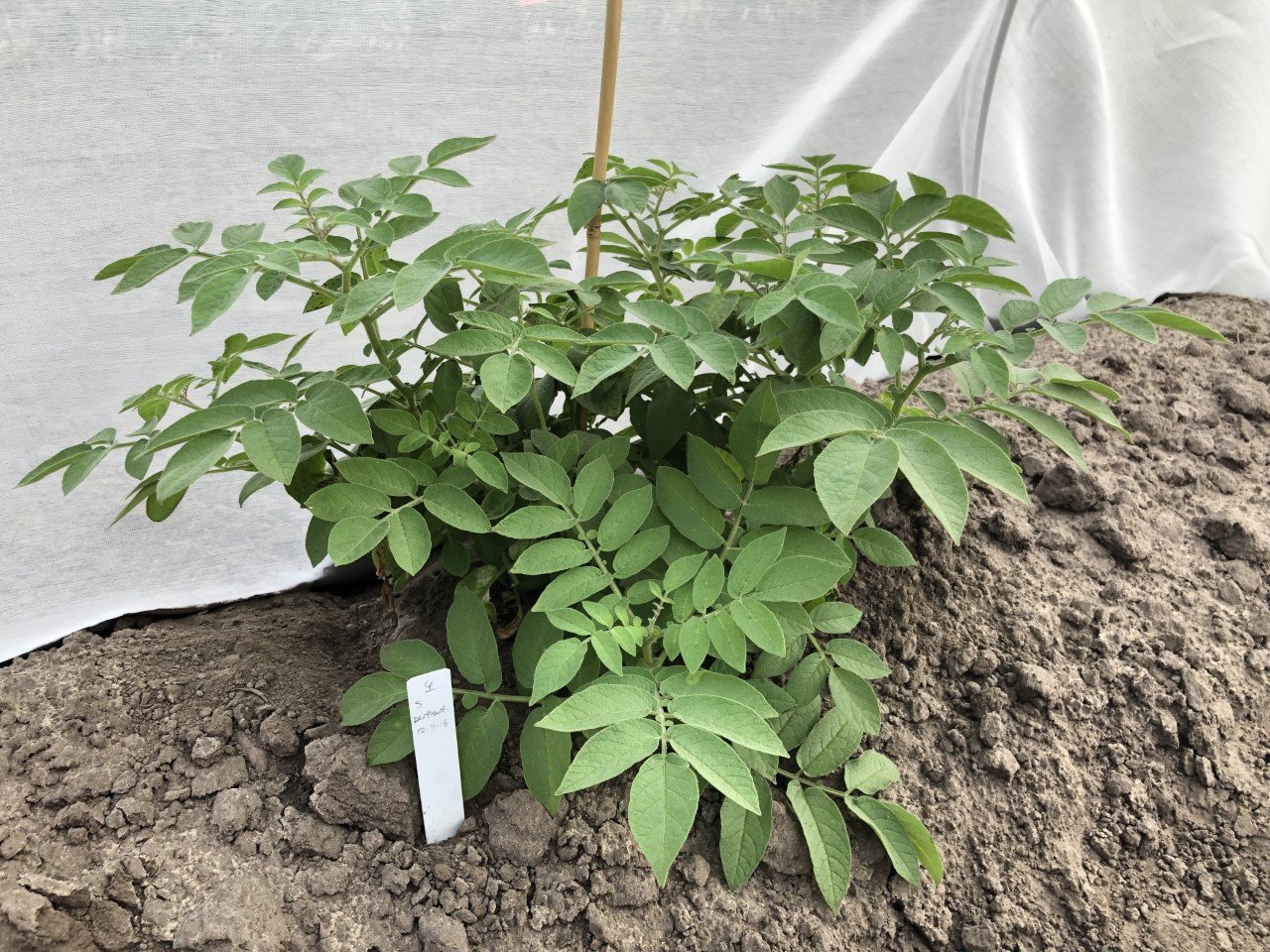A new study led by Texas A&M AgriLife researchers has revealed some resistance to zebra chip disease among certain wild species of potato.
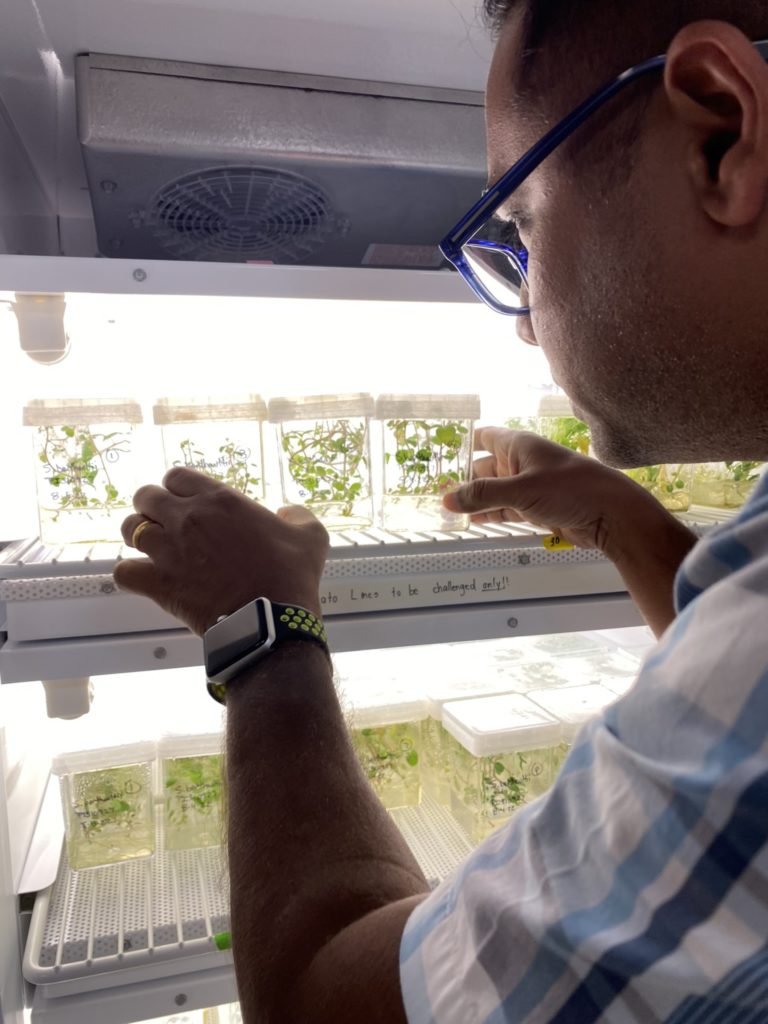
The study of 52 wild potato species — of which one accession was resistant and three were tolerant to the disease — took place as part of an effort to identify novel genetic resistance to the disease, which affects potato production worldwide.
The study, “Identification and Characterization of Potato Zebra Chip Resistance Among Wild Solanum Species,” appeared recently in the scientific journal Frontiers in Microbiology.
The primary investigator for the study was Kranthi Mandadi, Ph.D., a Texas A&M AgriLife Research scientist at the Texas A&M AgriLife Research and Extension Center at Weslaco and associate professor in Texas A&M’s Department of Plant Pathology and Microbiology.
Study co-investigators include Isabel Vales, Ph.D., AgriLife Research associate professor and potato breeder, Bryan-College Station, and Carlos Avila, Ph.D., AgriLife Research associate professor and vegetable breeder, Weslaco, both in the Department of Horticultural Sciences; and Freddy Ibanez, Ph.D., an AgriLife Research scientist at the center and assistant professor in the Texas A&M Department of Entomology.
Others involved in the study were Texas A&M AgriLife Research scientists Victoria Mora, M.S., Manikandan Ramasamy, Ph.D., Mona Damaj, Ph.D., and Sonia Irigoyen, Ph.D., at the Weslaco center, as well as Veronica Ancona, Ph.D., a plant pathologist and associate professor at Texas A&M University-Kingsville.
Funding for the study was provided through Texas A&M AgriLife’s Insect Vector Diseases Seed Grant Program.
“This type of outcome was precisely what AgriLife Research envisioned when we decided to fund Insect Vector Diseases Seed Grants,” said Henry Fadamiro, Ph.D., chief scientific officer and associate director, AgriLife Research, and associate dean, Texas A&M College of Agriculture and Life Sciences. “We would like to thank the Texas Legislature for funding AgriLife Research’s IVD Exceptional Item Request that has made these seed grants possible. Their continued support is invaluable.”
What is zebra chip disease?
Zebra chip is a complex disease due to its association with the unculturable bacteria Candidatus Liberibacter solanacearum and transmission by an insect vector, the potato psyllid. First reported in Saltillo, Mexico, and subsequently in South Texas, the disease was detected in many other states and commercial potato-growing regions of the world. Left unchecked, it can result in potato yield losses of up to 94%.
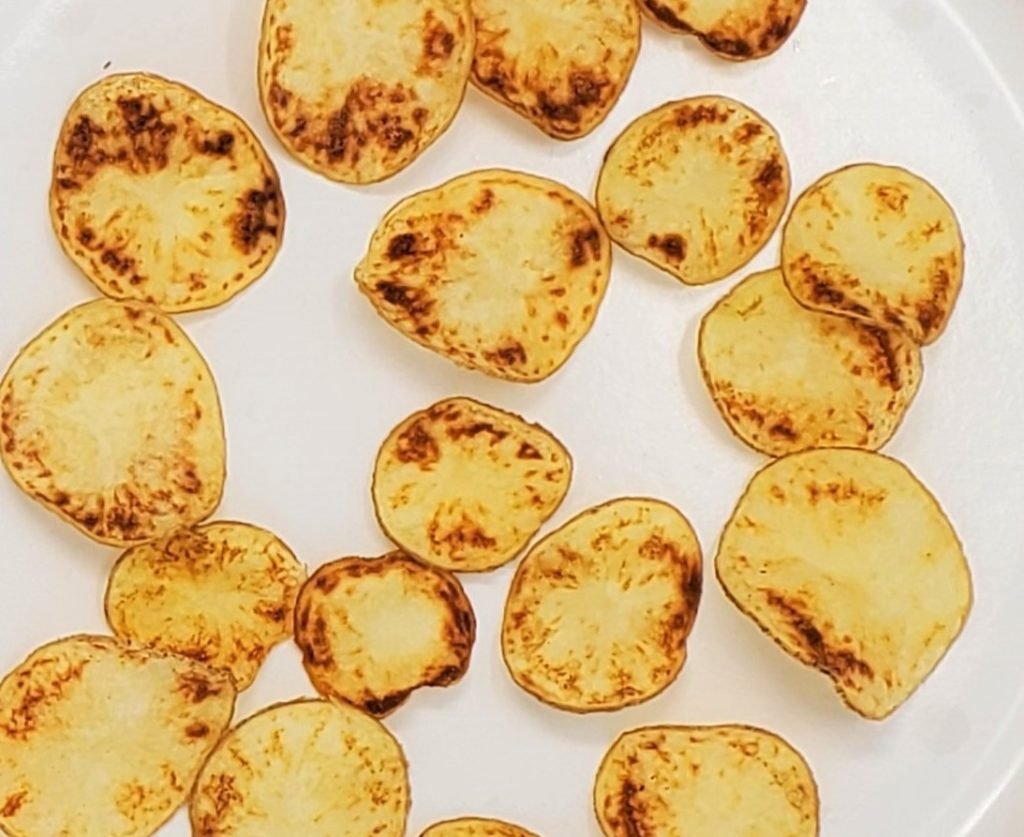

Above-ground symptoms of zebra chip-affected plants include purplish discoloration of young leaves, upward rolling of top leaves, the presence of aerial tubers, wilting, stunted growth and plant death.
“Zebra chip-affected tubers are of poor quality, exhibiting vascular ring browning and brown flecks,” Mandadi said. “These chips also have a bitter taste and dark brown striped, zebra-like patterns when fried.”
He said the disease ultimately lowers yield and tuber quality becomes unmarketable.
“If left uncontrolled, the disease can become a significant detriment to potato production.”
Why the study?
The potato is cultivated in over 160 countries and is considered the fourth most important staple food crop after wheat, corn and rice. It is a rich source of carbohydrates and provides other essential nutrients, such as dietary fiber, vitamins, minerals, protein and antioxidants.
“The potato is an important food crop worldwide,” Mandadi said. “As the demand for fresh and processed potato products increases globally, there is a need to manage and control emerging diseases such as zebra chip.”
In Texas, potatoes are grown in all regions that have a significant amount of commercial vegetable production. Commercial acreage for potato production is found in the South Plains, Panhandle and Rolling Plains, as well as the Winter Garden and Rio Grande Valley areas.
“In Texas, we have been dealing with the zebra chip issues for more than 20 years,” Vales said. “Over that time, the disease has become pervasive and has expanded not only in this state but also in other potato-producing states.”
The bacterium and the insect vector associated with zebra chip disease can also affect other vegetable crops and produce, including tomatoes, peppers and carrots.
Vales said current zebra chip management strategies revolve primarily around controlling the psyllid vector with insecticides or by altering cultural practices, such as timing planting dates to delay exposure to the psyllid population.
“But both of these have only marginal benefits, and while using chemical measures has helped control the psyllid population, this approach is associated with high costs and the potential for increased insecticide resistance,” she said. “That’s why identifying and breeding novel genetic resistance and tolerance to the zebra chip is another important avenue to achieve integrated pest management.”
Vales said previous studies have reported variations in the psyllid’s preference for wild potato species and their breeding clones.
The study results
“For the past four years, our team has been studying approaches to control zebra chip disease thanks to seed funding from projects associated with the Insect Vector Diseases Grant Program,” Mandadi said.
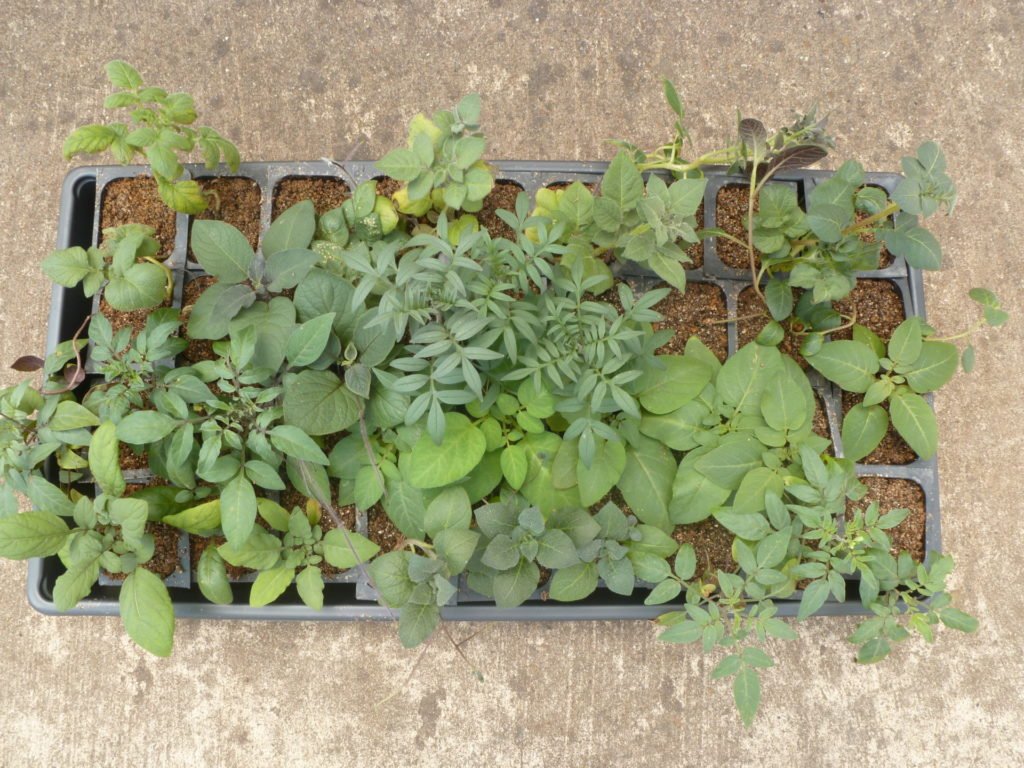

The plant material of 52 wild potato accessions belonging to a Solanum sect. Petota diversity panel, grown from true potato seeds obtained from the U.S. National Plant Germplasm System in Wisconsin, was used in the study.
“New sources of zebra chip resistance were identified among a wild collection of tuber-bearing Solanum species present in the Petota panel,” Mandadi said. “This panel of wild potato is a taxonomically well-characterized and diverse collection from which one can mine for valuable potato traits.”
Several of the 52 accessions were susceptible and moderately susceptible, showing some upward leaf rolling, chlorosis and plant stunting, Mandadi said.
“But following the screening, phenotypic evaluations and quantification of the bacteria in the accessions infected with bacteria-carrying psyllids, we identified one zebra chip resistant accession, Solanum berthaultii, along with three other accessions that were moderately tolerant to zebra chip.”
The three accessions identified in the study as moderately tolerant to zebra chip were S. kurtzianum, S. okadae and S. raphanifolium.
Mandadi’s team also found S. berthaultii has dense glandular leaf trichomes, and this foliar structural modification could be one factor responsible for much of the observed zebra chip resistance.
“The foliar portion produces a sticky substance that seems to trap the psyllid to the plant when it comes in contact with it,” Mandadi explained. “As a result, many psyllids die before reproducing, thus reducing transmission of the bacterium into plants.”
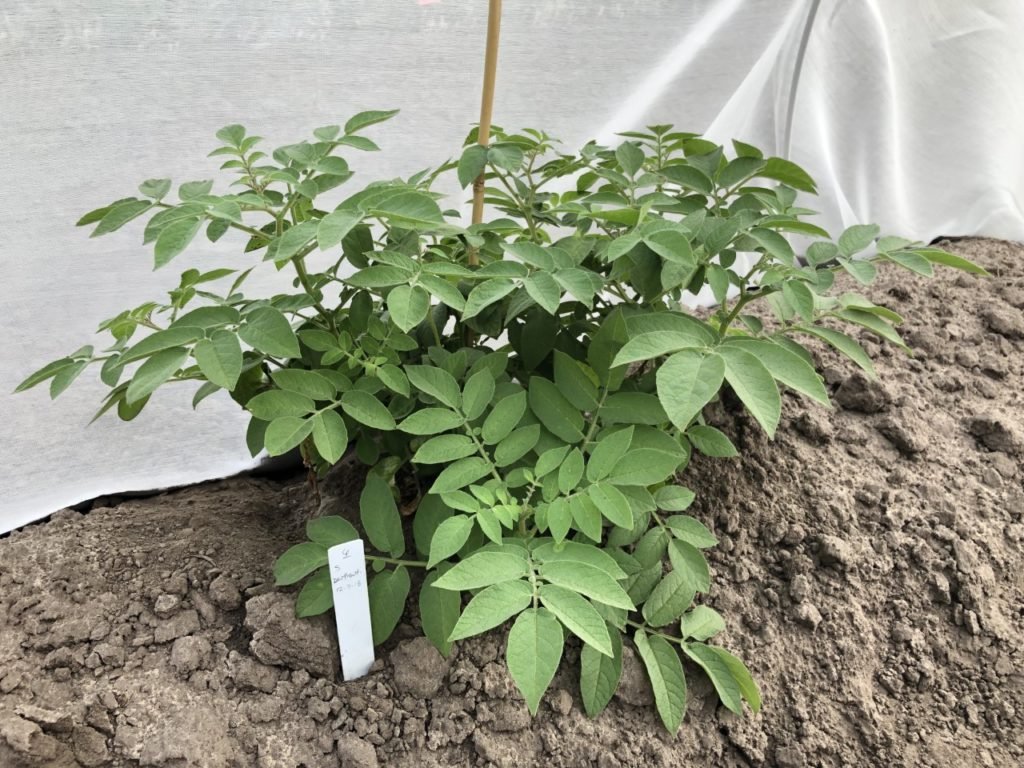

He noted the S. berthautii wild potato accession originated in Bolivia, which is adjacent to Peru, historically identified as the ancestral “birthplace” of the cultivated potato.
He said S. berthaultii is a promising source for zebra chip psyllid resistance that can be further studied to understand insect resistance mechanisms and incorporated into the potato production system.
“It could possibly be used in breeding new potato cultivars or even as a ‘trap crop’ that can be planted next to more traditional potato cultivars as a way to help eliminate psyllids,” Mandadi said.
He also noted that similar approaches in identifying novel genetic resistance and tolerance in wild plant species could help control other devastating crop diseases, such as potato late blight, citrus greening, Pierce’s disease of grapes and banana wilt.
-30-







